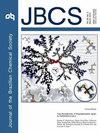Combining Fluorescent Quantum Dots with Molecularly Imprinted Polymers for the Screening of both Emerging and Classical Environmental Pollutants: A Review
IF 1.3
4区 化学
Q3 CHEMISTRY, MULTIDISCIPLINARY
引用次数: 0
Abstract
Emerging and classical pollutants, such as antibiotics, pharmaceuticals, pesticides, dyes and heavy metals derived from human activity, currently pose serious threats to the environment and human health. Despite the grave danger posed by these pollutants, there is still no adequate monitoring of their presence in the environment. The regular determination of these contaminants in the environment can play a crucial role in the protection of human health and the preservation of ecosystems. New analytical techniques allow the reproducible quantification of analytes at very low concentration levels. Molecularly imprinted polymers (MIPs), with selective recognition, have also been combined with quantum dots (QDs) and suggested as valuable materials in the construction of optical sensors. Several strategies have been proposed for the selective detection of these pollutants in recent years. Rather than employing expensive, time-consuming standard analytical methods, fluorescent quantum dots coupled with molecularly imprinted polymers can be used for developing simple, rapid and highly selective analytical methods for the detection of these pollutants. This review presents a brief discussion on the application of tailor-made polymeric materials in tandem with quantum dots for the rational construction of efficient sensors capable of determining the presence of these pollutants in aquatic environments.结合荧光量子点和分子印迹聚合物筛选新兴和传统环境污染物:综述
抗生素、药品、农药、染料和源自人类活动的重金属等新兴污染物和传统污染物目前对环境和人类健康构成严重威胁。尽管这些污染物构成了严重的危险,但仍然没有对它们在环境中的存在进行充分的监测。定期确定环境中的这些污染物可在保护人类健康和保护生态系统方面发挥关键作用。新的分析技术可以在非常低的浓度水平下对分析物进行重复性定量。具有选择性识别的分子印迹聚合物(MIPs)也与量子点(QDs)相结合,被认为是构建光学传感器的有价值的材料。近年来提出了几种选择性检测这些污染物的策略。荧光量子点与分子印迹聚合物相结合,可用于开发简单、快速和高选择性的分析方法,而不是采用昂贵、耗时的标准分析方法。本文简要介绍了定制聚合物材料与量子点的应用,以合理构建能够确定这些污染物在水生环境中存在的高效传感器。
本文章由计算机程序翻译,如有差异,请以英文原文为准。
求助全文
约1分钟内获得全文
求助全文
来源期刊
CiteScore
2.90
自引率
7.10%
发文量
99
审稿时长
3.4 months
期刊介绍:
The Journal of the Brazilian Chemical Society embraces all aspects of chemistry except education, philosophy and history of chemistry. It is a medium for reporting selected original and significant contributions to new chemical knowledge.

 求助内容:
求助内容: 应助结果提醒方式:
应助结果提醒方式:


